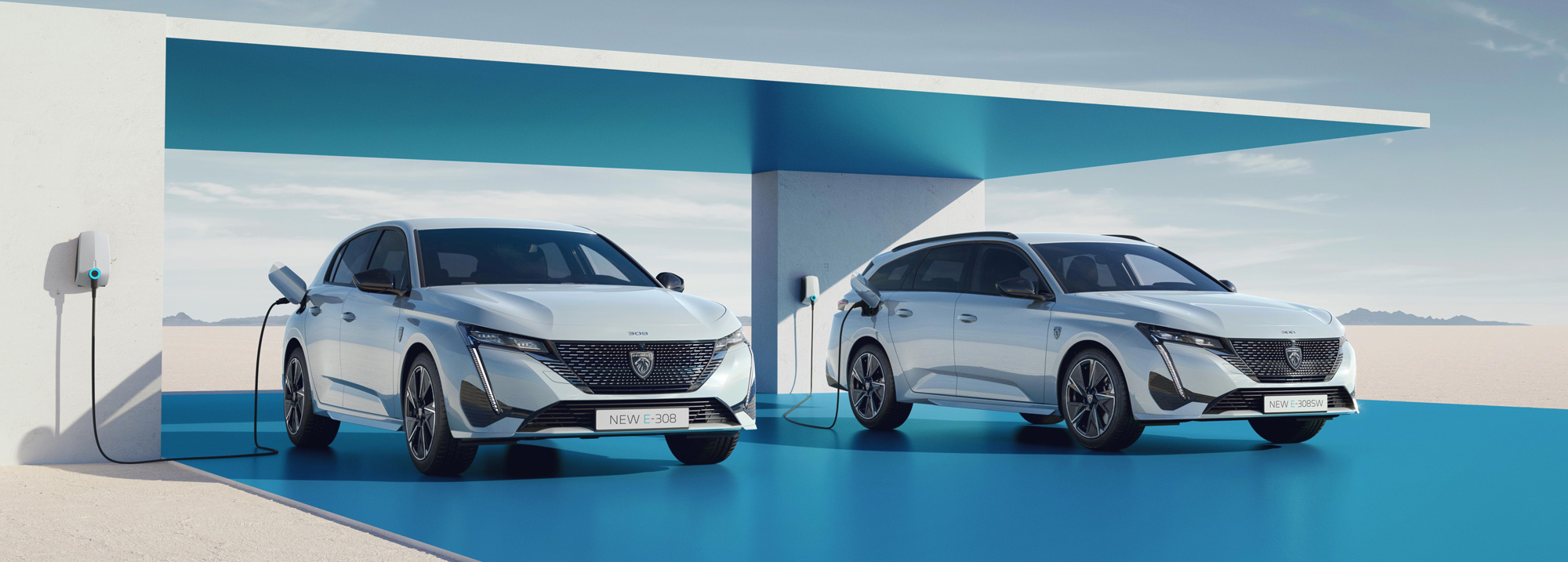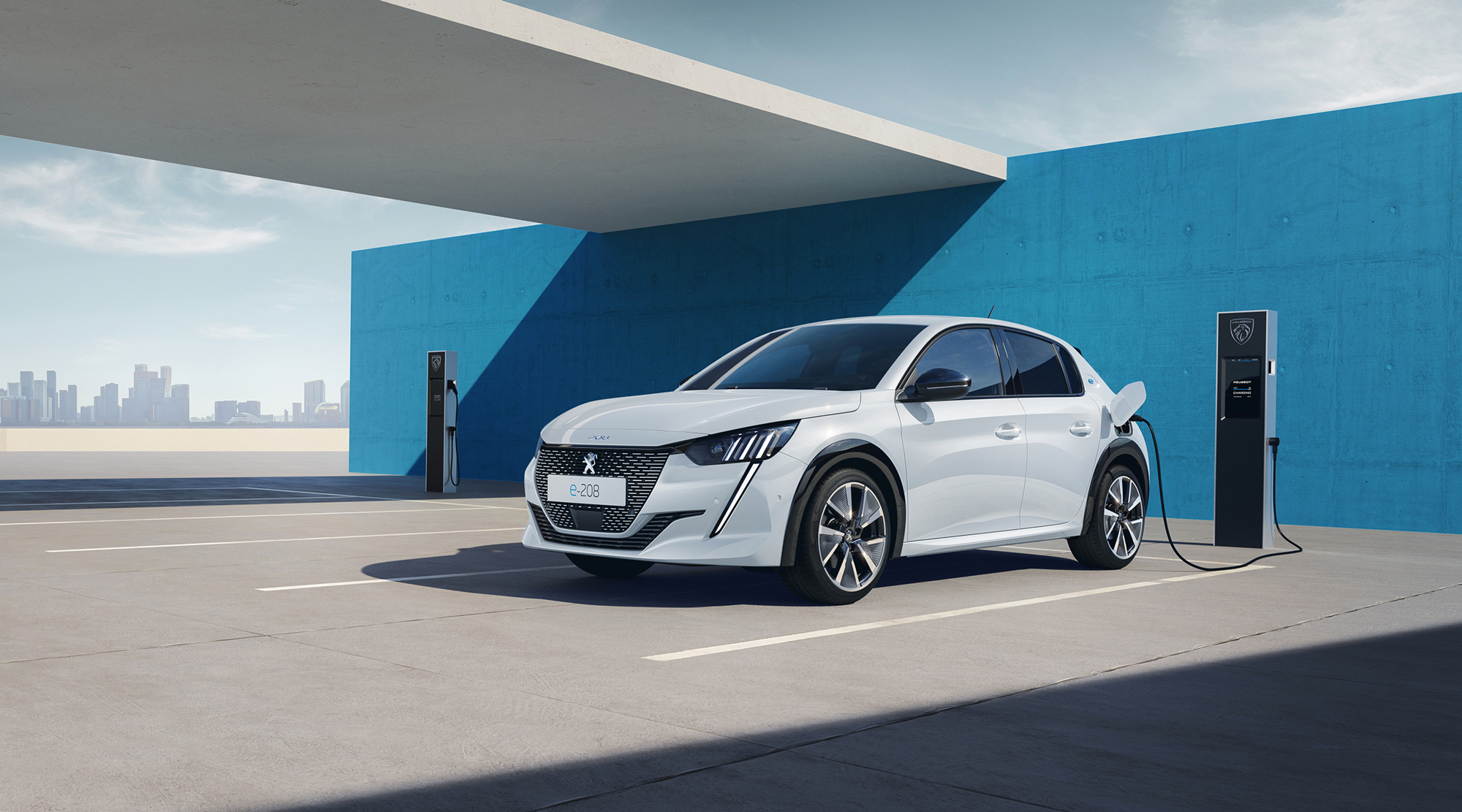

VEHICLES
Aggressive Electrification Roadmap
As announced during the Stellantis EV Day in July 2021, all Stellantis brands collectively target to achieve 100% of passenger car battery electric vehicles (BEVs) sales mix in Europe and 50% passenger car and light-duty truck BEV sales mix in the U.S. by end of 2030(1).
Today, Stellantis electrified vehicles are already segment market leaders in North America and Europe.
Across its 14 iconic brands, Stellantis will offer 75 BEV nameplates by 2030. Sales of BEVs will total 5 million units in 2030. The Company will have BEV only launches in the luxury and premium segments as of 2025 and then rolling throughout the portfolio. Importantly, all launches in Europe will be BEVs in 2026 and beyond.
To reach these goals, Stellantis is investing €30 billion through 2025 in electrification and software development. The EV offensive fits market evolution and the Company is well into the development cycle of new electrified products.
(1) Assuming conducive public policies
Roll Out of Battery Electric Vehicles (BEVs)


(1) Sum of models in EU and North America is higher than the global total as some models are present in both regions
(2) Based on current assessment of future markets & regulations, assuming conducive public policies (charging infrastructure, purchasing incentives)
Cutting-Edge Technologies
At the heart of the Stellantis product strategy are four multi-energy platforms, covering the spectrum of transportation from city cars to trucks and light commercial vehicles. The platforms are designed with a high level of flexibility (length and width) and component sharing, delivering economies of scale as each platform can support production of up to 2 million units per year.
Complementing the platforms are a family of three electric drive modules (EDM) that combine the motor, gearbox, and inverter. These EDMs are compact, flexible and can be easily scaled. The platforms and EDMs can be configured for front drive, rear drive, all-wheel drive and 4xe propulsion.
Battery packs will be tailored by vehicle use and type. By 2024, the use of two battery chemistries is planned to support various customer needs: a high energy-density option and a nickel cobalt-free alternative. Also, Stellantis sees its first competitive solid-state battery technology to be introduced in 2026 to address the issue of charging time.
Beyond electrification, Stellantis is pursuing a broad spectrum of powertrain technologies to address the widest range of mobility requirements. Through joint ventures with Nidec and Punch Powertrain, the Company is focused on producing the future generation of electric motors and electrified dual-clutch transmissions (eDCT). The Emotors joint venture aims to drive Stellantis’ electrification growth, starting with the M3 that will operate at 400 volts and deliver 115 kW of power. The e-Transmissions joint venture is focused on producing eDCTs available with two levels of electrification, 48-volt, and 320-volt, which can be used for hybrid and PHEV applications. Due to launch in 2023, the 48-volt hybrid propulsion system reduces fuel consumption and CO2 by up to 20% when compared with the current ICE powertrain.
Then there’s hydrogen. Stellantis is the first automaker to offer a Hydrogen Fuel Cell Zero Emission(1) solution for light commercial vehicles (LCVs), which combines the advantages of hydrogen fuel cells and electric battery technology in a Fuel Cell Electric Vehicle (FCEV), providing 400 kilometers (certification pending) zero emission range in just three minutes. This solution is particularly suited to the needs of LCV customers requiring long-range, fast refueling and zero-emissions without compromising payload and volume capacity. This technology, which Stellantis will build at high volumes, will be expanded to large vans in 2024, with the U.S. introduction in 2025.
(1) Zero exhaust emissions
Integrated Battery Ecosystem
Stellantis is building a global network of five gigafactories capable of delivering up to 400 gigawatt-hours of battery production by 2030. This network includes three production sites with Automotive Cells Company in Europe, one plant with LG Energy Solution joint venture in Canada named NextStar Energy, and one facility with Samsung SDI in the United States. These partnerships enable Stellantis to apply its design and engineering expertise to optimize battery pack production and make the Company an industry leader in battery pack cost.
A responsible supply of raw materials is also key to Stellantis’ strategy. The Company has an equity investment and offtake agreement with Vulcan Energy Resources Ltd. to produce lithium hydroxide in Germany with zero fossil fuels and net zero carbon footprint. Stellantis also has a binding offtake agreement with Controlled Thermal Resources Ltd. for battery grade lithium hydroxide for North American electrified vehicle production.
5 Battery Plants + 2 Battery Labs to Advance Our Electric Vehicle Production


Innovative Mobility Solutions
Stellantis is committed to providing the best customer experience, with full circle charging solutions for private, business, and fleet customers that are easy to use.
Free2move is the only global mobility brand offering a complete and unique ecosystem for its private and professional customers around the world. Relying on data and technology, Free2move offers a range of services, from one minute to several days or months with car-sharing service, short, medium, and long-term rental, or subscription as well as the reservation of VTC drivers, parking spaces and charging stations via the app.
Stellantis is also partnering with NHOA Energy, a global player in energy storage, e-mobility, and fast- charging infrastructure, to develop the Atlante fast-charging network in southern Europe. The network, integrated with solar power and energy storage and 100% grid integrated, expects the installation of 5,000 fast charge points by 2025, with a target of over 35,000 by 2030.
The “Arena del Futuro” circuit, built in Chiari, Italy, by A35 Brebemi in collaboration with Stellantis and other international partners, tests the capability of Dynamic Wireless Power transfer (DWPT) technology to wirelessly recharge electric vehicles over specially equipped road lanes without the need to stop at charging stations to recharge the battery. Through a system of coils positioned under the asphalt, DWPT transfers energy directly to cars, trucks, and buses without consuming the energy stored in their batteries.
In February 2021, Stellantis entered into a collaboration agreement with Archer, a California-based company that is designing and developing electric vertical takeoff and landing aircraft for use in urban air mobility networks.
“Arena del Futuro” Demonstrates Capability of Dynamic Inductive Recharging Technology for Electric Vehicles
Circular Economy Business
Stellantis has a comprehensive plan to foster its Circular Economy ambitions, with a 360-degree approach based on the 4R strategy – reman, repair, reuse, and recycle. The Company is building its capabilities, teams, and facilities to change the consumption model and the way products are designed, while creating a smart, integrated ecosystem to reduce the environmental impact and better manage the drive to carbon net zero. Stellantis’ main objectives are extending the life of vehicles and parts, ensuring that they last for as long as possible, and then returning material from sources including production, maintenance scraps and from end-of-life vehicles to the manufacturing loop for new vehicles and parts.
Stellantis will reach its goals through the implementation of the 4R strategy. This includes:
- Reman – Used, worn or defective parts are thoroughly dismantled, cleaned and remanufactured according to OEM specifications. Nearly 12,000 parts numbers in 40 product lines, including electric vehicle batteries, are already available.
- Repair – Parts are repaired and reinstalled into customers’ vehicles. Stellantis offers a range of 1,000 multi-brand parts. For electric vehicle batteries repair the Company has 21 dedicated E-Repair centers around the world, including its central facility.
- Reuse – More than 4.5 million multi-brand original parts currently available, still in good condition and recovered from end-of life vehicles, are reused ‘as-is’ to be fitted to vehicles, sold in 155 countries through the B-Parts e-commerce platform.
- Recycle – Materials from production, maintenance and end-of-life vehicles are fed back into the manufacturing process to produce new vehicles and parts.
It’s a strategy that complements the principle of ‘Design for the Circular Economy,’ using recycled materials and sustainable production processes to reduce the use of natural resources and the environmental impact to the lowest possible level when designing vehicles and parts. The shift is under way as Stellantis plans to launch the first vehicles containing 40% of green materials (recycled and bio-sourced) by 2030.
Following this approach, in addition to local loops of 4Rs to keep products and materials within countries, Stellantis’ leading Circular Economy Hub will be launched in 2023 at its Mirafiori Complex in Italy. The dedicated operation will enable the expansion of Stellantis’ current activities and support its ‘cradle-to-cradle’ business model.
To embrace all Circular Economy activities under a recognizable identity, Stellantis launched its new SUSTAINera label. For parts and accessories, it indicates a savings of up to 80% materials and 50% energy as compared to their equivalent new parts. The SUSTAINera label represents Stellantis’ promise to provide customers with sustainable, transparent, and affordable products and services, without compromising quality, while preserving the environment through decreased waste and less use of our planet’s resources.